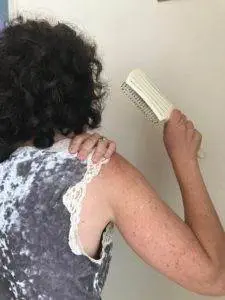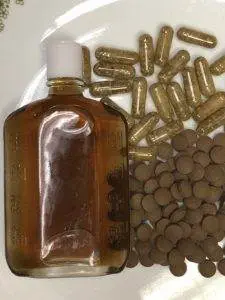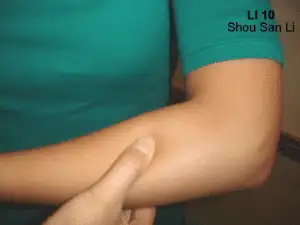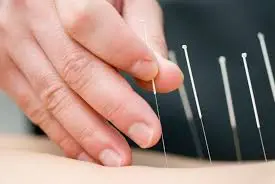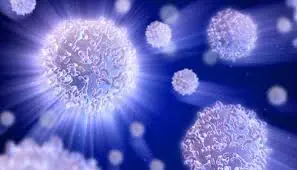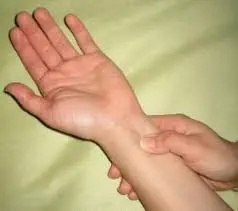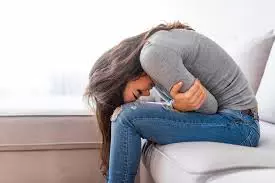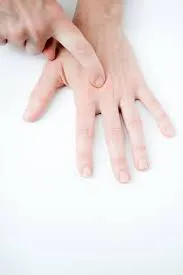By Xiaomei Cai, L.Ac., Ph.D. and Qineng Tan, L.Ac., Ph.D.
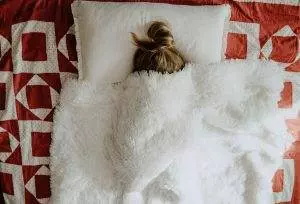
With so much going on in our lives these days, it is no wonder that many of us feel exhausted and tired all the time. Stress and lack of sleep are so common now that many people are easily tired. But when it gets to the point that a person is always tired, so much that he or she never feels rested and has trouble engaging in normal daily activities, fatigue becomes a serious health concern that requires attention.
Extreme fatigue is a mental and/or physical lack of energy that goes beyond normal tiredness. Physical or muscle fatigue prevents a person from engaging the body in the ways he or she is used to being able to, while being mentally exhausted causes sleepiness and an inability to focus the mind enough to perform one’s usual tasks. Transient or acute fatigue occurs when a person is deprived of sleep over a few days. In general, it is recommended that adults get 7-8 hours of sleep per night. However, a large published report showed that more than a third of Americans regularly sleep less than seven hours per night. Poor sleep habits do more than cause excessive tiredness; they can lead to all kinds of chronic health problems.
Conventional medicine has a limited understanding of fatigue causes, and does not offer much in the way of solutions for fatigue symptoms. Whether fatigue is acute or chronic, acupuncture and TCM offer proven benefits without any negative side effects.
Causes of Chronic Fatigue
Constant fatigue and extreme exhaustion that last for more than three to six months may be signs of Chronic Fatigue Syndrome (CFS) or Myalgic Encephalomyelitis (ME). As a syndrome, CFS/ME is a collection of symptoms that are often seen together, but is not fully understood by the medical community as a disease. CFS symptoms include:
- Extreme exhaustion that is made worse with physical or mental effort (post-exertional malaise, or PEM), i.e., feeling completely spent after any exercise or mental stress
- Sleep is not refreshing
- Foggy head, cognitive impairment
- Joint pain
- Constant sore throat
- Swollen lymph nodes
- Severe headaches
- Extreme sensitivity to lights, noises, smells, foods and chemicals
It can be difficult for doctors to come to a firm diagnosis for different types of fatigue, partly because the symptoms are “invisible” and subjective, but also because there are other health conditions with similar symptoms, in particular fibromyalgia and lupus. The causes of chronic fatigue have not been fully identified, but it is believed that CFS can be triggered by infections, particularly deep candida infection, immune dysfunction, nutritional deficiencies, extreme stress, Epstein Bar virus (EBV, mono), or a combination of these factors. Some studies have indicated that people who experienced childhood trauma may have increased risk of developing CFS, and that psychological stress due to post traumatic stress disorder (PTSD) is linked to CFS.
As of now, conventional medicine has no officially approved treatment protocol for chronic fatigue. Generally, patients are instructed to rest, pace themselves while practicing gentle exercises, and learn to avoid triggers that make their fatigue worse. Doctors may offer medications to help insomnia and antidepressants to help with emotional instability, but these types of drugs can have negative side effects and create dependency. Traditional Chinese Medicine works on a deeper level to address headache, dizziness, fatigue, muscle and joint pain with fatigue, and eye strain symptoms.
Sometimes constant tiredness is attributed to adrenal exhaustion. Adrenal Fatigue Syndrome is not a formally recognized medical diagnosis, but this, too, is a collection of symptoms that is theorized to be related to chronically low levels of the adrenal hormone cortisol. Cortisol is produced in short bursts when we are under stress; this is often called the “fight or flight” response. Going through an extended period of stress might lead to the adrenal glands becoming depleted. People with adrenal fatigue symptoms like tiredness, trouble sleeping, and cravings often rely on caffeine and sugar to help them get that burst of energy. Adrenal fatigue treatment by TCM helps to naturally balance the hormones, while lifestyle modifications implemented over time help resolve feeling so tired all the time.
How Is Fatigue Related to Stress?
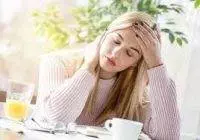
Clearly there are links between stress and fatigue. Stress is the body’s reaction to difficulties and situational changes. When stress builds up over time, the body and mind become exhausted. Chronic stress can lead to emotional exhaustion. Lack of focus and motivation leads to poor decision making, and then a person can no longer take proper care of herself and her loved ones. Mental health issues such as anxiety, depression, and PTSD become intrusive and disruptive to daily life. In today’s world, we are all subjected to many stressors every day. Simply processing a constant onslaught of new information on top of all of the other things we are expected to manage is bound to cause mental fatigue. Feeling overwhelmed is the new normal, but in order to prevent it from becoming a serious health problem, we need to address emotional fatigue.
How Is Fatigue Related to Sleep Problems?
We need nourishing food and restful sleep to function optimally. If an individual does not prioritize healthy eating and getting enough sleep, eventually the body becomes seriously depleted. Feeling tired after eating is a sign that one might be eating the wrong foods, or at the wrong times. Extreme fatigue after eating is also an indicator that when a person does sleep, he or she is not getting good quality sleep. Working on behavioral modifications to improve sleep quality is certainly an important part of addressing fatigue, as is finding a physical activity program that improves energy.
How Is Fatigue Related to Hormones and Women’s Health?
Women often experience fatigue as they go through hormone changes. Feeling lethargic due to PMS, PMS fatigue or period fatigue is common. Fatigue during pregnancy can cause women to feel weak and tired. Women going through menopause commonly feel over tired. These types of hormone related fatigue can be helped by balancing the hormones with acupuncture and herbs.
How Can Acupuncture Help to Fight Fatigue?
The most fundamental concept of Traditional Chinese Medicine is that of “Qi,” the life force energy that flows through the body. According to TCM, fatigue is related to the quantity and quality of Qi a person is able to maintain. Qi deficiency, then, is the primary cause of fatigue. Deficiencies can show up in different ways:
- Spleen-pancreas – This is the organ system that directs digestion. When this is weak, people might feel bloated after eating, tend toward loose bowels, feel weak and depressed, and bruise easily. This can be due to erratic eating patterns, especially too many sweets. Worrying or over-thinking can also be part of the problem. Many people go through stressful periods when they exhibit these behaviors and symptoms.
- Lung – The lungs do the job of extracting Qi from the air we breathe. Sometimes lung Qi is weakened when we do a lot of talking as part of our work without taking enough breaks. Emotions of grief and sadness can also weaken the lungs. This may present as being prone to coughs or colds.
- Blood Deficiency – This often goes together with Qi deficiency. A heart-related blood deficiency can lead to feelings of anxiety and restless sleep. A liver-related blood deficiency can cause eye strain symptoms.
- Yang Deficiency – Lack of heat energy in the body causes weakness with body aches and fatigue. This differentiation can cause menopausal fatigue and low back pain.
An acupuncture practitioner will first perform a thorough consultation and exam to identify the specific symptoms of fatigue and the factors potentially causing them. A course of treatment might include not only acupuncture to stimulate points along the meridians, but also moxibustion, a topical therapy used to cultivate warm energy.
One formal study of patients diagnosed with CFS showed significant improvement in both physical and mental fatigue among participants who received daily acupuncture over the course of ten days.
Another study of chronic fatigue patients who were given acupuncture as a complement to conventional treatment showed greater improvement over patients who did not receive acupuncture.
Acupuncture has been shown to increase serotonin levels, which help improve sleep and mood. This means it can be an effective treatment for fatigue and depression, without the side effects and dependence that are often caused by SSRIs (antidepressants that work on serotonin levels in the brain).
Chinese herbs are used in customized combinations to address imbalances in the organ systems. TCM herbal remedies are an integral part of treatment for chronic fatigue, and should be combined with your acupuncturist’s nutritional recommendations to nourish Qi and reverse fatigue.
Top 10 Tips to Beat Fatigue
While acupuncture treatment and herbal support will go a long way to combat fatigue, it is critical that patients make meaningful lifestyle modifications. New habits will not only improve symptoms of fatigue, but prevent exhaustion in the future.
- Timing is everything – The adrenal hormones will be more balanced if you follow natural circadian rhythms. This means, ideally, rising with the sun and going to bed well before midnight. Exercise early in the day rather than stimulating the body with activity in the evening. Stick with the same sleep routine, even on weekends and holidays.
- Cut caffeine – Drinking coffee or sodas to stay sharp is actually very detrimental to your health. Think of it as borrowing energy; you’ll have to pay it back later, with interest. If you are used to multiple caffeinated drinks per day, start by reducing them gradually. Then, take at least a few weeks off of caffeine entirely.
- Avoid Alcohol – Even though it may feel like a glass of wine helps you relax in the evening, alcohol has a negative impact on the quality of sleep, often causing you to sleep lightly and wake in the night. Again, start by cutting back, and try to abstain entirely until fatigue has improved.
- Drink more water – Dehydration reduces mental alertness and physical stamina. Drinking 8 glasses of water per day ensures that nutrients and oxygen are moving smoothly through the bloodstream and that toxins are being excreted properly. Don’t wait until you’re thirsty; by then, you are already dehydrated. Remind yourself to drink at regular intervals.
- Eat more frequently to maintain blood sugar levels and energy. Smaller meals eaten every 3-4 hours throughout the day

Walnuts are a great source of Omega-3s are better than 2-3 large meals.
- Get enough Omega-3 – Fatty acid supplementation has been shown to reduce symptoms in CFS patients. Good sources of Omega-3 fatty acids include: fish, fish oil, flaxseeds, chia seeds, hemp seeds, and walnuts.
- Short bouts of exercise – Even when the mildest exertion can be exhausting, it’s vital to establish and maintain regular physical activity. A short 15 minute walk outdoors will help get the blood pumping, and exposure to sunlight is crucial for getting Vitamin D to boost immune function.
- Qi Gong – This gentle form of exercise is part of the holistic health care system represented by TCM. The focused breathing and subtle movements of Qi Gong are designed to nurture Qi. Specific exercises will help to bring in more Qi, encourage Yang fire energy, and relieve stress.
- Yoga – Another practice that goes beyond physical exercise, yoga encourages specific breathing and meditation techniques that harness “Prana.” Similar to concept of Qi, Prana is life-giving energy that we can take into the body from the environment through deep breathing.
- Rest – Prioritizing rest means more than getting enough sleep at night. Change your mindset from one of constant “busyness” and productivity. Give yourself time to rest, read, meditate, listen to music, laugh, and just do nothing. If you have to convince yourself, remember, “doctor’s orders–I have to rest!”
Acupuncture Near Me for Dealing With Fatigue
Now more than ever, extreme stress, lack of sleep and activity, and constant triggering events can cause chronic fatigue. Fatigue is feeling more than tired; it can become a real health concern if you are so physically and mentally exhausted that you cannot get up and face your day. Do not hesitate to reach out for help. The doctors at Art of Wellness are TCM experts with over 30 years of experience helping patients heal unresolved traumas, restore balance and replenish their energy. Call today to get started with a treatment plan to banish fatigue.
*This article is for education from the perspective of Traditional Chinese Medicine only. The education provided by this article is not approved by FDA to diagnose, prevent, treat and cure human diseases. It should not stop you from consulting with your physician for your medical conditions. Traditional Chinese Medicine is based on Qi, which is an invisible force that usually cannot be observed by modern science. Because science focuses on testing ideas about the natural world with evidence obtained through observation, these aspects of acupuncture can’t be studied by science. Therefore acupuncture and Chinese herbs are often not supported by double-blind, randomized trials, and they are considered alternative medicine therapies in the United States.
